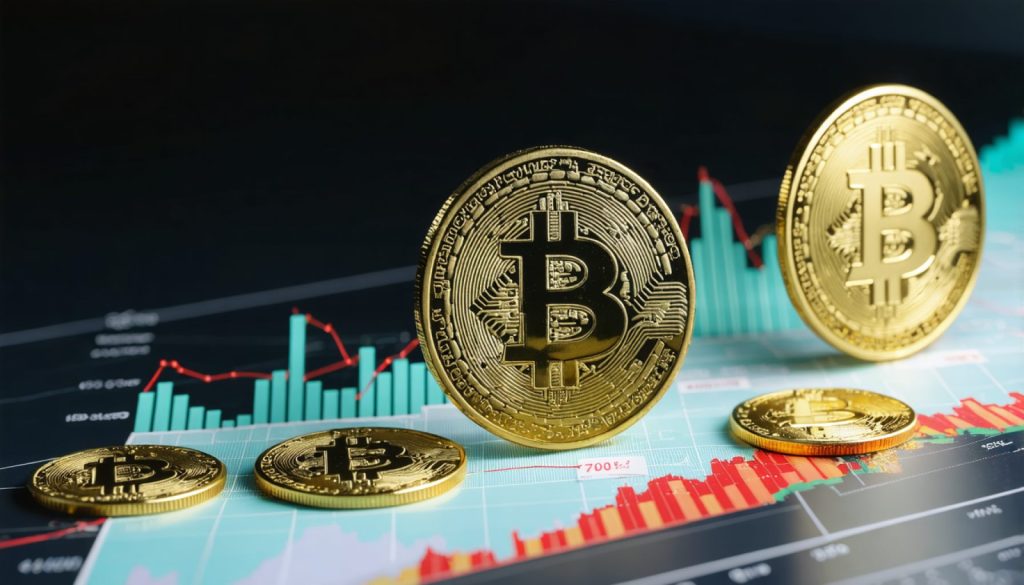
- An abrupt market drop on Binance led to significant losses for altcoins, notably impacting traders.
- ACT, a Solana-based memecoin, saw a dramatic 52% plunge, while DEXE fell around 35% before partially recovering.
- The incident followed Binance’s update on leverage and margin tiers, sparking concerns about possible links to the crash.
- Binance refuted any manipulation, attributing the crash to large ACT sales by a few accounts amid low liquidity.
- Flash crashes highlight the volatility in the crypto market and underscore the necessity for increased safeguards and liquidity measures.
- Traders need to remain alert to potential risks inherent in the rapidly shifting crypto landscape.
On a seemingly uneventful Tuesday, the tranquil seas of the crypto market suddenly roiled as several altcoins took a breathtaking plunge on Binance, the world’s leading cryptocurrency exchange. Amidst this tempest, unsuspecting traders watched in disbelief as their assets nosedived—one trader alone saw a staggering seven-figure loss.
The most dramatic fall was witnessed by ACT (Act 1 The Prophecy), a Solana-based memecoin, which tumbled a dizzying 52% in just half an hour, spiraling from $0.1897 to $0.0904. As the dust settled, ACT continued its descent, trading at $0.0588 the following day. While ACT took center stage, DEXE, tied to the DeXe decentralized organization, also suffered, dropping approximately 35% in 45 minutes, though it began clawing back some of its loss shortly thereafter.
In the eye of this financial storm, Binance’s users were left grappling with a haunting question: what triggered this sudden market turmoil? Eyes quickly turned to Binance’s recent update—an adjustment of leverage and margin tiers for several trading pairs. Critics were swift to rally, postulating that these changes unleashed the chaos, yet the selective scope of the crash puzzle remained. If the tweak was to blame, why were ACT and DEXE the primary victims?
Binance, aiming to shed light on the mystery, ventured a preliminary explanation. No anomalies, it insisted, tainted the market during those turbulent minutes. Instead, a flurry of vast ACT spot sales, predominantly by three VIP accounts worth 514,000 USDT, and a non-VIP account offloading 540,000 USDT, created a perfect storm, magnified by limited liquidity. The exchange firmly rejected any theories of a deliberate manipulation scheme, asserting that no account reaped suspicious profits amidst the chaos.
Such flash crashes are a haunting hallmark of the crypto landscape—a precarious dance on the edge of volatility. These incidents spotlight an urgent need for robust safeguards and liquidity to protect digital assets in this adventurous yet unforgiving domain. Until systemic resilience can outpace market fragility, traders must stay vigilant, eyes wide open to the enigmatic allure and risks of the crypto realm.
The Untold Chaos Behind Binance’s Crypto Crash: Lessons and Strategies for Traders
Understanding the Flash Crash on Binance: A Deeper Dive
On what appeared to be a normal Tuesday, the crypto market witnessed a sudden crash in altcoin prices on Binance, leaving many traders in shock. Notably, the ACT (Act 1 The Prophecy), a memecoin based on the Solana blockchain, plummeted by 52% in merely 30 minutes. Similarly, DEXE also faced significant losses during this crash. This incident raised pressing questions amid concerns about market stability and trading practices.
What Caused the Altcoin Crash?
While Binance revised leverage and margin tiers for multiple trading pairs, leading some to suspect this as the cause, Binance’s analysis pointed to massive ACT spot sales by a few accounts. The sales spike was compounded by limited liquidity, amplifying the price drop. Despite speculation, Binance confirmed that no unusual gains were made by any accounts during this event, challenging theories of deliberate manipulation.
Exploring the Market Dynamics
How-To Steps & Life Hacks for Traders:
1. Diversify Holdings: To mitigate risk, diversify your crypto portfolio across different assets. This serves as a safeguard against sudden drops in any individual asset’s value.
2. Utilize Stop-Loss Orders: Implementing stop-loss orders can protect investments by automatically selling assets when they reach a predetermined price point, minimizing potential losses.
3. Stay Informed: Regularly monitor updates from exchanges and the broader crypto market to anticipate changes that might impact your holdings.
Real-World Use Cases:
– Traders can explore automated trading bots, which execute trades based on pre-set conditions, thereby reducing emotional decision-making.
– Crypto insurance options are being developed to offer protection against unexpected market events like flash crashes.
Reviewing Limitations and Controversies
Despite crypto’s potential, these abrupt market movements highlight its inherent volatility. The lack of regulation and liquidity are key challenges that need addressing. Binance’s assertion of normal market conditions during the crash may not fully satisfy traders demanding more transparency and stringent controls.
Predicted Trends in the Cryptocurrency Market
Industry pundits suggest that regulatory bodies will increasingly focus on enhancing market transparency. The emergence of decentralized exchanges (DEXs), which offer higher liquidity and quicker transactions, is anticipated to increase. Moreover, the implementation of blockchain technology for real-world applications continues to expand, further integrating crypto-assets into traditional finance.
Conclusion and Recommendations
For those immersed in crypto trading:
– Stay Cautious: Always remain vigilant and informed about current market trends and changes in exchange policies.
– Consider Stability Options: Begin investing in stablecoins that are less prone to volatility compared to regular altcoins.
– Participate in Learning: Engage in online courses or seminars that expand your understanding of crypto market strategies.
To navigate the challenging waters of cryptocurrency successfully, employing robust strategies and maintaining a keen awareness of market signals is crucial.
For more insights, visit Binance.



